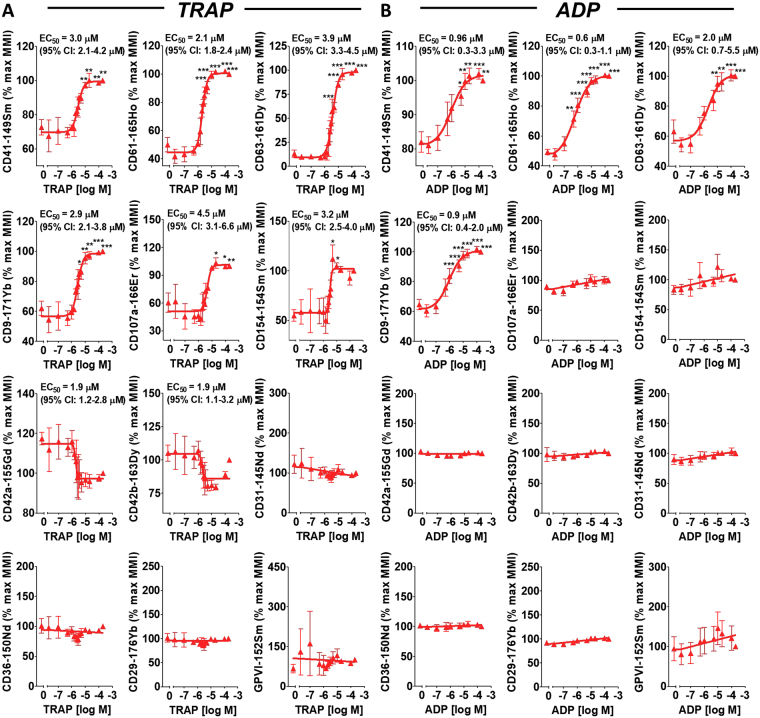Figure 3.
MC enables an order of magnitude more parameters than FFC to be analyzed simultaneously during platelet activation. Citrate-anticoagulated blood from the same 3 separate healthy donors in Fig. 2 was simultaneously treated with vehicle or the indicated concentrations of TRAP (A) or ADP (B) for 30 minutes in the presence of a custom platelet-specific, metal-tagged antibody panel. This panel contained antibodies directed against CD41, CD61, CD63, CD9, CD107a, CD154, CD42a, CD42b, CD31, CD36, CD29 and GPVI. Samples were fixed in 1% formaldehyde and analyzed by MC. Data were analyzed using a non-linear fit of log agonist vs. response; variable slope or linear regression in GraphPad Prism 5. Results are expressed as a percentage of the mean metal intensity (MMI) achieved with 200 µM ADP or TRAP (means ± SEM; n = 2/3, with n = 2 accounting for the linear region of the TRAP dose-response [concentrations 1.5–3.5 µM)] and n = 3 accounting for all other concentrations [0–1 µM and 5–200 µM]). Statistical analysis: 1-way ANOVA was used in conjunction with a Dunnett multiple comparison test (all results compared to vehicle control) to indicate statistical significance; *P < 0.05, **P < 0.01 and ***P < 0.001. Abbreviations: ADP, adenosine diphosphate; FFC, fluorescence flow cytometry; MC, mass cytometry; TRAP, thrombin receptor activating peptide.

